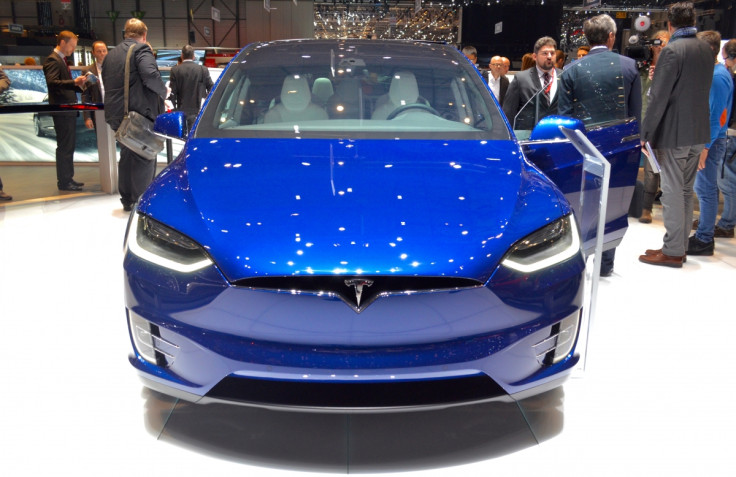Tesla Model X: Hands-on in Geneva with Elon Musk's third act

Following up on the success of the Tesla Roadster and Model S is no easy task. The Model X must take what we all loved about the S – supercar-beating performance, hundreds of miles of range, a feeling of living in the future – and project it into a larger, more practical and more expensive vehicle.
In many ways, the Model X is a natural evolution of the S. The cars share the same chassis, containing the same battery pack and the same front and rear motors. They also share a similar external design and a familiar interior, complete with massive 17in touchscreen dashboard. But where the S was billed as a discreet, luxury saloon car for whisking businessmen from the taxi ranks of expensive Geneva hotels, the Model X is more of a family car.

Yes, the Model S is technically a seven-seater, so long as your two young children don't mind sitting in the boot, facing backwards. But the Model X is a true seven-seater, with three rows of full-size seats and the rear-most two are large enough for adults to use.
IBTimes UK spent some time with the Model X at its European debut at the Geneva motor show. This is what we found.
The Model X is a big car. At 168.4cm, it is 25cm higher than the Model S on which it is based. But it isn't huge for an SUV; a Range Rover is the same length but 22cm higher. The Tesla makes excellent use of its space, fitting in seven full-size seats designed by the company itself (differing from those used in the Model S), or six if you prefer to buy an X with three rows of two seats and extra space between the middle pair.
Sitting inside the Model X feels very similar to the S. You are sitting higher and more upright, but the familiar steering wheel and dashboard stop the X's driving position from feeling too much like the "sit-up-and-beg" stance you get in some SUVs and people carriers. Move to the middle row – through those incredible falcon wing doors – and there is just as much room as there is in the front.

Access is super-easy thanks to the trick doors, which each contain six sensors to make sure they don't smash into anything. Incidentally, they need just 30cm (12in) of space at the side of the car to open fully. Also, I should quickly add that the front doors, which open traditionally, are also powered and can open and close themselves.
All three middle seats can be moved back and forth with electric motors, which cleverly speed up when you apply more pressure, like when folding a seat forward to get into the back row. Here, I just fit, although I am only 5ft6. I had a good few inches of headroom, but I imagine anyone closer to 6ft would struggle in the back row. That said, these seats are far more practical than the optional children's seats in the back of the Model S.

To my eyes, the Model X is one of the few cars which will benefit aesthetically from having a front number plate attached. The car at Geneva did not, and as a result has a little too much blank space on its face. I think the lack of a radiator grill (no engine to cool) is to blame here. Also strange at first is the size of the front windscreen, which extends way beyond where the roof usually starts and back a good 12in along the top of the car.
Here it is gradually tinted before it finally meets the metal roof, but from the inside this provides masses of extra light compared to its rivals. Seeing your sun visor suspended with glass above and below it is weird, but the whole set makes perfect sense. This is another example of Tesla's ability as a new company to design a car from scratch, with no pressure to conform with decades-old design rules or house style.

While this approach sounds great in principle – and is certainly how Tesla has become such a success – it has caused the Model X to look a bit... well, strange. For me, the car's exterior proportions don't quite work right, likely due to the compromises inherited from adding a larger body to the same chassis as the Model S. Other brands manage to platform-share, but here it results in a car which is awkwardly tall and slightly bulbous. Of course, this is entirely my opinion and I don't expect everyone to agree...

We haven't driven the Model X yet, but the P90D version we sat in has the Ludicrous Mode option, meaning it can sprint to 60mph in 3.2 seconds. This makes it the fastest SUV ever made, and gives it the same vital acceleration stat as the McLaren F1, a multimillion-pound supercar previously owned by Elon Musk and one of the fastest road cars ever made.
As for how the Model X drives when our foot isn't pressed to the floor, we will have to wait until the car arrives in the UK later in 2016, with prices ranging from around £50,000 to over £90,000. In the meantime, we know the Model 3 will be formally announced at the end of Match, with several teasing announcements to follow before the mid-range, £30,000 car goes on sale in 2017. We suspect Tesla and Musk are about to have two very busy years indeed...
© Copyright IBTimes 2024. All rights reserved.







